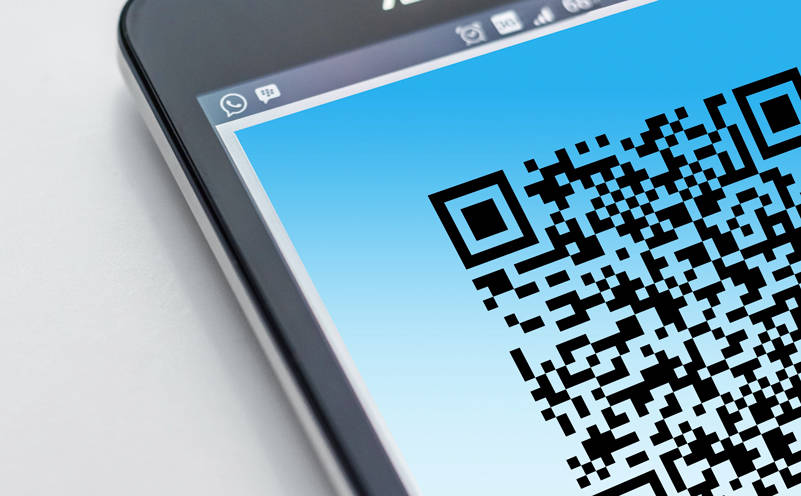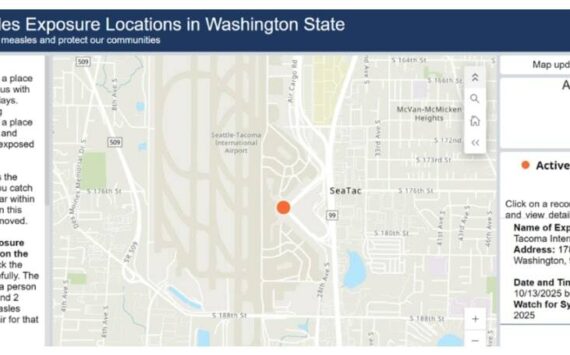By Morf Morford
Tacoma Daily Index
Remember QR codes?
QR (abbreviated from Quick Response code) is a type of matrix barcode (or two-dimensional barcode) first designed in 1994 for the automotive industry in Japan.
QR codes were a breakthrough in dense but tiny and near universal information markers.
They were vastly popular, and then they weren’t.
They were a great technology that came and went.
And for most of us, QR codes were just another blip on the tech radar screen.
But we did stick with bar codes.
You’ve certainly noticed bar codes on just about everything from individual fruit to shoes and certainly every product in between at any store or website.
A barcode is a machine-readable optical label that contains information about the item. QR codes contain vastly more information than linear bar codes.
Bar codes are a single line of 10 or 13 digits. A QR code, on the other hand, consists of black squares arranged in a square grid on a white background, which can be read by an imaging device such as a camera or smart phone.
Even though QR codes were developed in Japan in the mid 1990s, and used briefly in the USA, they have taken over the economy in China.
Back in 1994 not many individuals had smart phones, but now, of course, everyone does.
When people across China want to pay for something, they don’t reach for their wallets. They don’t use cash or even cards; they use their phones.
Across China, with Alipay and another smartphone app, the social platform WeChat, exchanging money is a matter of scanning a QR code — at an in-person cashier, during checkout at an online store or face-to-face with a friend. Shops and restaurants still accept cash, though for security and convenience, they’d rather not.
People in China use QR codes to shop on credit — no plastic card required. They take out small loans, invest their savings and buy health and life insurance.
For a little perspective, I lived in Beijing, China in 1999. Back then cash was king.
In fact cash was the only thing.
If you wanted to buy a large ticket item, a television or even a car, for example, you would save your money and carry a satchel or even a suitcase full of cash to the store (and if you did not have a car, as with most people back then, you took your bag or suitcase full of cash on the bus or subway).
As you might imagine, security was a major issue. Thefts – completed or attempted – of these packages was common.
Every bank had stacks of meticulously counted bills. Clerks huddled at tables counting these mountains of cash (usually with an abacus).
Counterfeiting of currency was a persistent problem.
Chinese currency was (and still is) multi-colored, and, largely because of a high population of visually impaired citizens, bills of different denominations are different sizes.
Banks (virtually all run by the state) were not set up for checks or credit cards.
To describe this system as cumbersome, if not barbaric, would be an understatement.
Fast-forward to the 21st Century and China has largely left cash (and debit/credit cards, and certainly checks) far behind as clumsy remnants of the 20th Century economy.
In other words, China jumped a couple centuries in a decade or two.
As a historical reminder, China was the first to develop printed paper currency – about a thousand years before Europe.
Their use of QR codes on a massive industrial and consumer basis is just as pioneering.
But with their domestic market, it is also immensely profitable.
Alipay, a spin-off of Alibaba, has more than 730 million monthly users, more than twice the population of the United States. By comparison, PayPal has 346 million active accounts.
The Ant Group, a related financial app company, handled more than $17 trillion in digital payments in mainland China during the 12 months that ended in June 2020. PayPal’s total payment volume in 2019 was $712 billion. Ant also enabled around $300 billion in credit to consumers and small businesses.
Way back in 2016, China’s mobile payments peaked at $5.5 trillion, roughly 50 times the size of America’s $112 billion market, according to consulting firm iResearch.
When Ant Group goes public in the Hong Kong stock market, it could be valued around $310 billion. That would make it worth about as much as JPMorgan Chase, and much more than Citigroup and Goldman Sachs. 18 new billionaires are likely to emerge thanks to this IPO, in addition to boosting cofounder Jack Ma’s fortune by $27 billion, propelling him to a net worth of $68 billion — thanks in part to his other holdings including Alibaba Group.
The listing could raise nearly $34.5 billion, but may go higher depending on demand. If all goes as expected, Ant will be the biggest IPO by several billion dollars. The largest IPO to date is Saudi Aramco, which raised more than $29 billion earlier this year.
Forbes has reported that China has 389 billionaires as of this year, second to the U.S., which has 614. With the Ant IPO, you can now expect China’s number of billionaires to pass 400.
You can find more information here: https://www.forbesindia.com/article/global-news/chinas-ant-group-to-raise-34-billion-in-worlds-biggest-ipo/63751/1 and here: https://www.gobankingrates.com/investing/stocks/ipo-making-18-new-billionaires/.
I need to emphasize that this much capital has been generated within China.
As they move more and more into world markets, besides providing and exchanging goods and services, China will be bringing the heft and power of its own medium of exchange.
In QR Codes we trust
Currency in the 21st Century will look nothing like currency in any previous times.
Coins will certainly be used less and less – Canada stopped making pennies in 2012 as have other countries, including Britain and Australia. We in the United States have debated the idea of getting rid of pennies.
Thanks to online shopping, most of typical daily spending is by card or other online payment system, and many people under 35 have never used or even seen a check.
Coins that we can hold and exchange (or hide in treasure chests) have been around for millennia. From ancient Rome to the pieces-of-eight of classic pirates, money has been something that had a physical reality. Coins could be collected, stored or hidden away. Or lost. Or stolen.
Up until recently, most of us liked the “feel” of cash. A wad of bills in hand is a very powerful, visceral image. A pile of coins, or diving into a room full of coins like Scrooge McDuck is an image that has nothing in common with a handheld screen.
What we tend to forget about money is that it is purely representational – this coin,or piece of paper or plastic card represents value – it actually holds essentially none.
If you were in a wilderness survival situation for example, coins would be of no use, and paper money would useful, at best, as something to start a fire with. Food or shelter would hold real value – not money. Is a screen really so different from a piece of paper with numbers printed on it?
Money, by definition an abstraction, takes another leap from concrete reality as it abandons physical existence and becomes just another app on the handheld flickering screen that has become our home, our bank and our very identity.
The green-back dollar is a great image, and a classic line in folk songs, but the QR code seems to be the digital currency of the future, and as with many things, our future is already in motion in China.






